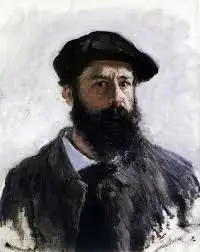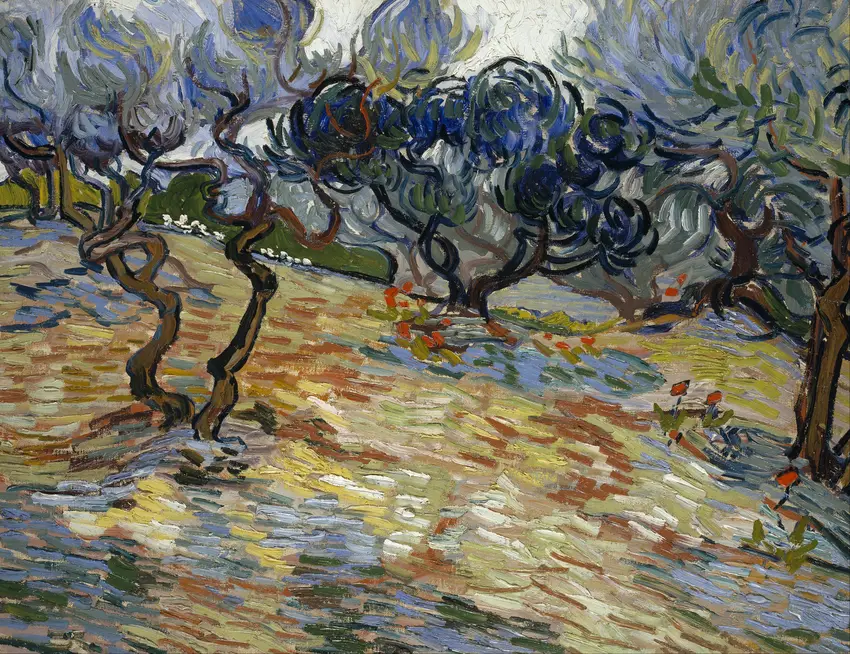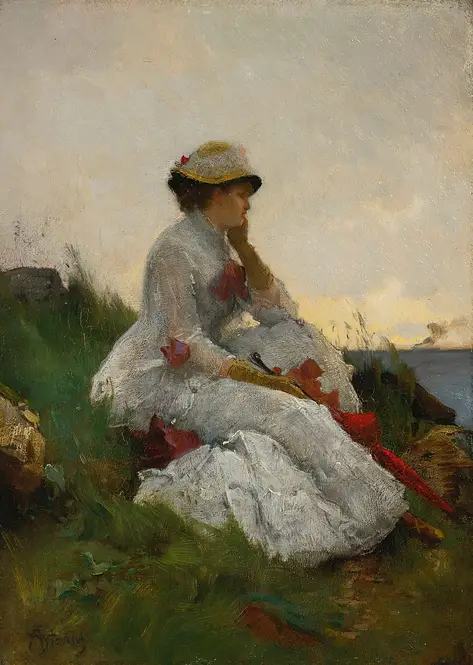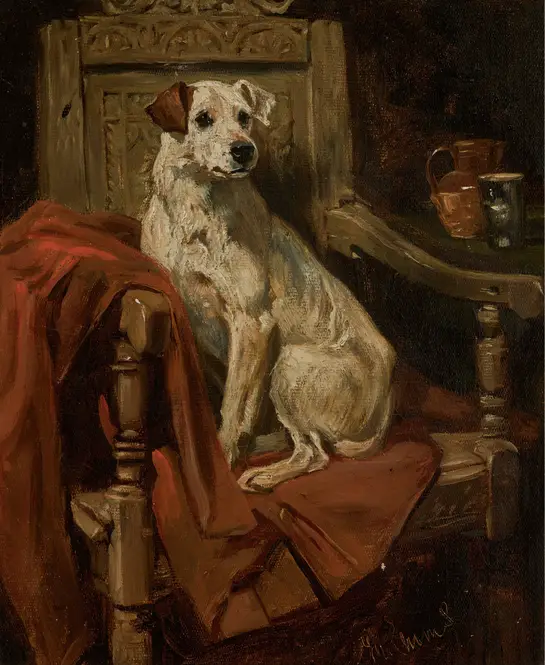Claude Monet’s ‘Poppy Field (Giverny)’ bursts with the unrestrained energy of nature, a vivid snapshot of wildflowers swaying under an open sky. The painting captures a fleeting moment where crimson poppies dominate the foreground, their delicate petals almost vibrating against the lush greens of the grass. Monet’s loose, expressive brushstrokes create a sense of movement, as if the breeze itself is alive within the canvas. Beyond the field, a solitary figure—perhaps a woman with a parasol—adds a whisper of human presence, blending seamlessly into the landscape rather than overpowering it. The horizon dissolves into soft blues and whites, suggesting the vastness of the sky without demanding attention. There’s no rigid structure here, only the raw, unfiltered beauty of a summer day in the countryside.
What makes this work so captivating is its refusal to be static—every stroke feels spontaneous, as though Monet painted in a rush to preserve the scene before the light shifted. The poppies aren’t meticulously detailed; they’re impressions, splashes of red that somehow feel more real than realism. This isn’t just a field—it’s an experience, a sensory overload of color and texture. Monet’s genius lies in his ability to make the viewer feel the warmth of the sun, the rustle of the grass, and the sheer joy of being surrounded by nature’s chaos. It’s a celebration of impermanence, a reminder that beauty exists in the fleeting and the unrefined.


-full.webp)
-full.webp)




 (1892)-full.webp)
-full.webp)
%20(1890)-full.webp)